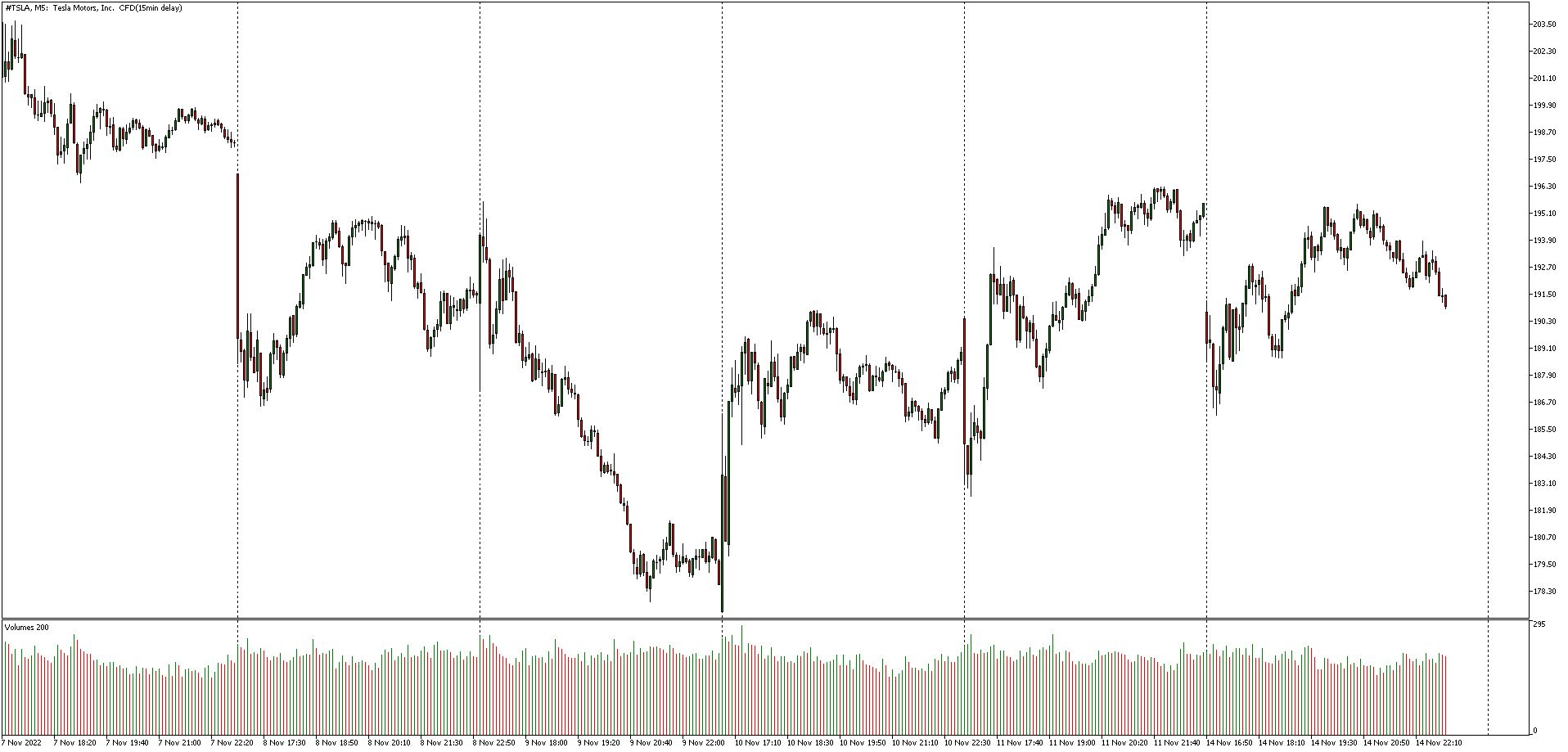Introduction
Welcome to the world of penny stocks trading! If you have an interest in the stock market and a willingness to take on higher risks for potentially higher returns, then penny stocks could be the perfect opportunity for you. In this article, we will explore the basics of penny stocks, their benefits and risks, strategies for trading, and tips for success.
Penny stocks are typically low-priced stocks with a market value of $5 or less per share. These stocks are often associated with smaller, emerging companies that are not listed on major stock exchanges. Unlike blue-chip stocks, which are shares of well-established companies, penny stocks present a greater level of volatility and uncertainty.
Despite their low price tags, penny stocks can offer significant potential for profit. The allure of high returns in a short period of time has attracted many new traders to try their luck in this market. However, it’s important to recognize that with the potential for high rewards, there are also increased risks.
Trading penny stocks requires careful research, analysis, and a solid trading plan. It’s crucial to understand how to identify promising penny stocks and the factors that can affect their value. Having the right mindset and risk management strategies in place is vital to navigate the highly speculative nature of this market.
In the following sections, we will delve deeper into the world of penny stocks, providing you with the knowledge and tools necessary to make informed trading decisions. From understanding the basics to learning effective strategies, this guide will equip you with the insights needed to participate in penny stocks trading effectively.
The Basics of Penny Stocks
Penny stocks are stocks of small companies with low market capitalization and are typically traded at a price of $5 or less per share. These stocks are often found on over-the-counter (OTC) markets or on secondary exchanges that cater to smaller companies. While penny stocks can be appealing due to their low cost, they are also known for their higher volatility and risk.
One key aspect of penny stocks is their low liquidity. The trading volume of these stocks is often relatively low, meaning there may be fewer buyers and sellers compared to stocks listed on major exchanges. This can make it challenging to enter or exit positions quickly. It’s important to consider this aspect before investing in penny stocks.
Furthermore, penny stocks are generally associated with smaller, less-established companies that may not have a proven track record or strong financials. This makes them inherently riskier investments compared to stocks of larger, well-established companies. Due diligence and thorough research are essential before investing in penny stocks.
Investors often trade penny stocks in hopes of capitalizing on short-term price movements. These stocks can be highly volatile, experiencing swift and substantial price fluctuations. Consequently, traders who engage in penny stocks trading must closely monitor the market and be prepared to act quickly.
Unlike larger companies, penny stocks usually do not meet the listing requirements of major exchanges. This can limit the amount of publicly available information about these companies, making it more challenging to conduct thorough fundamental analysis. Therefore, traders often rely on technical analysis and market trends to make trading decisions.
It’s important to note that not all penny stocks are high-risk or fraudulent. Some companies with promising growth potential may be trading as penny stocks for various reasons, such as recent IPOs or temporary setbacks. However, due to the increased risk associated with these stocks, it’s crucial to approach penny stocks trading with caution and a well-defined strategy.
In the next section, we will explore the benefits and risks of trading penny stocks, providing you with a comprehensive understanding of the potential rewards and pitfalls of this investment niche.
Benefits and Risks of Trading Penny Stocks
Penny stocks offer unique benefits and risks that distinguish them from traditional stocks. Understanding these advantages and challenges is crucial for anyone considering trading penny stocks.
Benefits:
- Low Barrier to Entry: One of the primary advantages of penny stocks is their low cost per share. This makes them accessible to investors with limited capital, allowing individuals to build a diverse portfolio with a smaller initial investment.
- High Potential for Returns: Penny stocks are known for their significant profit potential. Due to their volatility, these stocks can experience rapid price movements, offering the possibility of substantial short-term gains. This allure of quick profits attracts traders seeking higher returns.
- Opportunity for Early Investment: Penny stocks often represent shares of smaller companies in their early stages of growth. Getting in on the ground floor of a promising company can result in substantial returns if the company succeeds and its stock price rises.
- Exciting and Dynamic Market: Trading penny stocks can be exhilarating, as the market is characterized by fast-paced price movements and constant excitement. For traders who enjoy the thrill of the chase, the penny stock market can provide a thrilling trading experience.
Risks:
- High Volatility: Penny stocks are notorious for their volatility, which can work against traders as easily as it can work in their favor. The rapid price swings can lead to significant losses, making risk management crucial.
- Lack of Information: Penny stocks typically have limited publicly available information, making fundamental analysis challenging. It can be difficult to assess the financial health and long-term prospects of smaller companies, increasing the risk of investing in penny stocks without thorough research.
- Lack of Regulation: Many penny stocks are traded on OTC markets or secondary exchanges with fewer regulatory requirements compared to major exchanges. This lack of oversight can attract fraudulent or manipulative practices, exposing traders to the risk of scams and pump-and-dump schemes.
- Illiquid Market: Penny stocks often have low trading volumes, which can result in limited liquidity. This can make it difficult to buy or sell shares at desired prices, potentially leading to slippage and difficulty exiting positions quickly.
- Emotional Trading: The volatility and uncertainty associated with penny stocks can trigger emotional decision-making. Fear and greed may influence trading decisions, leading to impulsive or irrational actions that can result in significant losses.
It’s essential to evaluate these benefits and risks carefully before engaging in penny stocks trading. Developing a solid trading plan, conducting thorough research, and practicing risk management techniques are crucial for navigating the unique challenges of this market.
In the next section, we will explore how to identify and research penny stocks effectively, enabling you to make informed trading decisions based on sound analysis.
How to Identify and Research Penny Stocks
Identifying and researching penny stocks is a critical step in successful trading. With the inherent risks associated with these stocks, conducting thorough analysis and due diligence is essential. Here are some key steps and factors to consider when identifying and researching penny stocks:
1. Screen for Potential Penny Stocks:
Start by using stock screeners or specialized tools to filter and identify penny stocks that meet your criteria. These criteria can include price range, market capitalization, trading volume, and sector. Narrowing down the list to potential candidates will simplify your research process.
2. Analyze Company Financials:
Review the financial statements, such as the balance sheet, income statement, and cash flow statement, to assess the financial health of the company. Look for positive trends in revenue growth, profitability, and cash flow. Pay attention to key financial ratios, such as debt-to-equity ratio and current ratio, to evaluate the company’s ability to meet its financial obligations.
3. Research Company News and Developments:
Stay updated with the latest news, press releases, and developments related to the company. Significant events, such as product launches, partnerships, or regulatory approvals, can impact the stock price. Analyze the potential impact of these events on the company’s prospects and future growth.
4. Assess Industry and Market Conditions:
Consider the industry in which the company operates and evaluate the growth potential and competition within that sector. Understand the overall market conditions and trends that may affect the company’s performance. It’s crucial to align your investment with companies operating in industries with favorable outlooks.
5. Use Technical Analysis:
Apply technical analysis techniques to analyze price patterns, trends, and trading volumes of penny stocks. Utilize charting tools and indicators to identify potential entry and exit points. Technical analysis can be particularly valuable in penny stocks trading due to the limited availability of fundamental data.
6. Evaluate Management Team:
Assess the qualifications, experience, and track record of the company’s management team. Look for leaders with relevant industry expertise and a history of successfully guiding companies through growth stages. A competent and trustworthy management team increases the likelihood of the company’s success.
Remember, thorough research is essential before making any investment decisions. By conducting meticulous analysis and staying informed, you can gain a better understanding of the potential risks and rewards associated with specific penny stocks.
In the following section, we will delve into choosing a stockbroker for penny stocks trading, an integral part of navigating this market effectively.
Choosing a Stockbroker for Penny Stocks Trading
When it comes to trading penny stocks, choosing the right stockbroker is crucial. A stockbroker serves as the intermediary between you and the market, executing trades and providing access to various trading tools and resources. Here are some key factors to consider when selecting a stockbroker for penny stocks trading:
1. Commission and Fee Structure:
Consider the commission and fee structure offered by the stockbroker. Since penny stocks typically involve a higher number of transactions, it’s important to choose a broker with competitive rates that align with your trading strategy and budget. Be aware of any additional fees or hidden charges that may impact your overall trading costs.
2. Trading Platform and Tools:
Evaluate the trading platform and tools provided by the stockbroker. A user-friendly and intuitive platform can greatly enhance your trading experience. Look for features such as real-time quotes, charting tools, technical indicators, and order types specific to penny stocks trading. Access to relevant market data and research reports can also be valuable.
3. Market Access:
Ensure that the stockbroker provides access to the specific markets and exchanges where penny stocks are traded. Some penny stocks may be listed on over-the-counter (OTC) markets or secondary exchanges, so it’s important to choose a broker that offers access to these markets. Consider the availability of pre-market and after-hours trading as well.
4. Risk Management Tools:
Check if the stockbroker provides risk management tools such as stop-loss orders or trailing stop orders. These tools can help limit potential losses and protect your investments in the volatile world of penny stocks.
5. Research and Education Resources:
Consider the stockbroker’s research and educational resources. Look for access to fundamental and technical analysis tools, market insights, expert analysis, and educational materials related to penny stocks trading. These resources can help you make more informed trading decisions and enhance your understanding of the market.
6. Customer Support:
Assess the level of customer support provided by the stockbroker. Prompt and reliable customer support is crucial, especially when you encounter technical issues or have questions regarding your trades. Look for brokers that offer multiple channels of communication and have a reputation for excellent customer service.
Take your time to research and compare different stockbrokers to find the one that best suits your needs and trading style. Consider the costs, trading platform features, market access, risk management tools, research resources, and customer support to make an informed decision.
In the next section, we will explore strategies for trading penny stocks, providing you with some approaches to consider when navigating this volatile market.
Strategies for Trading Penny Stocks
Trading penny stocks requires a well-defined strategy to navigate the volatile and unpredictable nature of this market. Here are a few commonly used strategies to consider when trading penny stocks:
1. Breakout Trading:
This strategy involves identifying penny stocks that are experiencing a breakout, where the stock price moves above a key resistance level or a significant price range. Traders aim to enter positions as the stock breaks out, expecting further upward momentum. Proper risk management and setting stop-loss orders are crucial when employing this strategy.
2. Momentum Trading:
Momentum trading focuses on buying penny stocks that show strong upward momentum. Traders look for stocks with high trading volumes and rapid price movements. The goal is to ride the momentum and sell at higher prices. However, careful analysis of the stock’s underlying fundamentals is still important to avoid overvalued or unsustainable stocks.
3. Contrarian Trading:
Contrarian trading involves taking positions opposite to the prevailing market sentiment. Traders look for penny stocks that have experienced significant price declines or are undervalued. The idea is to buy when others are selling, expecting a potential price reversal. Thorough research and analysis are crucial when implementing this strategy to avoid catching falling knives.
4. Swing Trading:
This strategy involves taking advantage of short to medium-term price swings in penny stocks. Traders aim to capture profits by buying at support levels and selling at resistance levels. Technical analysis and chart patterns play a significant role in identifying potential entry and exit points.
5. Penny Stock Scanning:
A systematic approach to scanning and selecting penny stocks is essential for success. Traders use stock screening tools or specialized software to identify potential candidates based on specific criteria, such as price range, trading volume, and volatility. This strategy allows traders to focus on stocks that meet their requirements and exhibit favorable trading characteristics.
6. Diversification and Risk Management:
Regardless of the trading strategy employed, diversification and risk management are critical. It’s advisable not to put all your capital into a single penny stock or sector. Spreading your investments across multiple stocks can help mitigate risk. Implementing stop-loss orders and having an exit strategy are essential to protect against significant losses.
Remember, each trading strategy has its own advantages and risks. It’s important to find a strategy that aligns with your risk tolerance, trading style, and goals. Additionally, continuous learning, adapting, and refining your strategy based on market conditions and experiences are vital for long-term success in trading penny stocks.
In the following section, we will discuss effective risk management techniques and the importance of setting realistic expectations in penny stocks trading.
Managing Risks and Setting Realistic Expectations
Managing risks and setting realistic expectations are essential components of successful penny stocks trading. The volatile nature of this market comes with a higher level of risk, and understanding how to mitigate and manage that risk is crucial. Here are some key aspects to consider:
1. Risk Assessment and Diversification:
Before entering any trade, carefully assess the potential risks involved. Evaluate factors such as company financials, industry trends, and market conditions. Diversification is also important to spread risk. By investing in a variety of penny stocks across different sectors, you can minimize the impact of any single stock’s poor performance.
2. Use Stop-Loss Orders:
Implementing stop-loss orders is a vital risk management technique. A stop-loss order specifies a price level at which you will automatically exit a trade to limit potential losses. Setting a stop-loss level based on your risk tolerance ensures that you do not hold on to a stock as it continues to decline in value.
3. Practice Proper Position Sizing:
Avoid allocating a significant portion of your portfolio to a single penny stock. Determine a reasonable position size that aligns with your risk tolerance. Identifying the maximum percentage of your capital you are willing to risk on any single trade can help protect your overall portfolio from significant losses.
4. Research and Due Diligence:
Thorough research and due diligence are critical to minimize risks. Dig deep into a company’s financials, news, and developments. Stay updated with industry news and understand the risks associated with the penny stock niche. Knowledge and information are powerful tools in managing risks effectively.
5. Set Realistic Expectations:
It’s essential to set realistic expectations when trading penny stocks. While the potential for high returns exists, it’s important to recognize that penny stocks can also be highly volatile and unpredictable. Avoid falling for unrealistic promises of overnight success and focus on developing a long-term trading plan that is based on sound analysis and risk management.
6. Continuous Learning and Adaptation:
The penny stock market is dynamic and constantly evolving. Successful traders adapt their strategies based on changing market conditions. Continuously educating yourself, staying updated with market trends, and learning from your experiences and mistakes are essential to managing risks and improving your trading skills.
Remember, trading penny stocks involves a higher level of risk compared to traditional stocks. The key is to approach trading with a disciplined mindset, thorough research, and a risk management plan in place. By managing risks effectively and setting realistic expectations, you can increase your chances of success in penny stocks trading.
In the next section, we will provide some valuable tips for successful penny stocks trading that can further enhance your trading journey.
Tips for Successful Penny Stocks Trading
Trading penny stocks can be a rewarding but challenging endeavor. To improve your chances of success in this volatile market, here are some valuable tips to keep in mind:
1. Do Your Research:
Thorough research is crucial. Analyze a company’s financials, industry trends, and any news or developments that may impact its stock price. Make informed decisions based on solid analysis rather than relying solely on speculation or rumors.
2. Develop a Trading Plan:
Having a trading plan is vital. Clearly define your objectives, risk tolerance, and entry and exit points for each trade. Stick to your plan and avoid making impulsive decisions based on emotions or market noise.
3. Practice Risk Management:
Implement risk management techniques such as setting stop-loss orders and properly sizing your positions. This helps protect your capital and minimize potential losses. Remember that preservation of capital is just as important as making profits.
4. Start Small and Learn from Experience:
Begin with small positions and gradually increase them as you gain experience and confidence. Learn from both successful and unsuccessful trades, analyzing what worked and what didn’t. Continuous learning and adaptation are key to improving your trading skills.
5. Keep Your Emotions in Check:
Emotions can cloud judgment and lead to impulsive trading decisions. Avoid making trades based on fear or greed. Stick to your trading plan and remain disciplined, even during periods of market volatility.
6. Utilize Technical Analysis:
Technical analysis can be a valuable tool in penny stocks trading. Learn to analyze charts, identify patterns, and use technical indicators to make informed trading decisions. Combine technical analysis with fundamental analysis for a well-rounded approach.
7. Stay Informed:
Stay updated with market news, trends, and company developments that may impact penny stocks. Set up alerts and follow reliable financial news sources to stay ahead of any potential market-moving information.
8. Be Patient and Set Realistic Expectations:
Penny stocks trading requires patience. It may take time to find the right opportunities and see the desired results. Set realistic expectations and understand that not every trade will be a winner. Focus on long-term success rather than seeking overnight riches.
9. Learn from Successful Penny Stock Traders:
Study the strategies and techniques employed by successful penny stock traders. Learn from their experiences, insights, and mistakes. However, adapt their strategies to suit your own trading style and risk tolerance.
10. Continuously Improve:
Never stop learning and improving your trading skills. Attend seminars, read books, and follow reputable traders and financial experts who can provide valuable insights. Adapt and adjust your strategies based on market conditions and your own experiences.
By following these tips, you can enhance your chances of success in penny stocks trading. Remember that consistency, discipline, and a commitment to continuous learning are key elements of building a successful trading career.
Conclusion
Trading penny stocks can be an exciting and potentially lucrative venture. However, it comes with its own set of challenges and risks. To navigate the complex world of penny stocks trading successfully, it’s crucial to arm yourself with knowledge, strategies, and a disciplined approach.
We explored the basics of penny stocks, the benefits and risks of trading them, and strategies that can be employed to maximize your chances of success. It’s important to conduct thorough research, practice risk management, and set realistic expectations when trading penny stocks.
Choosing the right stockbroker, identifying and researching penny stocks, and implementing appropriate trading strategies are all key factors in achieving success in this niche market. Additionally, continuous learning, staying informed, and adapting to market conditions are vital for long-term profitability.
Remember, trading penny stocks requires patience, discipline, and a commitment to continuous improvement. It’s important to approach this market with a clear plan, sound analysis, and a well-defined risk management strategy. While penny stocks offer potential for high returns, it’s essential to understand the inherent risks and exercise caution in your trading decisions.
Whether you are a seasoned trader or just starting out, the world of penny stocks can be enticing and rewarding. By applying the tips and strategies discussed in this article, you can enhance your ability to navigate the penny stock market effectively and increase your chances of achieving your financial goals.
Always remember to invest responsibly, stay informed, and continuously work on improving your trading skills. With dedication, perseverance, and the right strategies, you can find opportunities and potential success in the world of penny stocks trading.

























